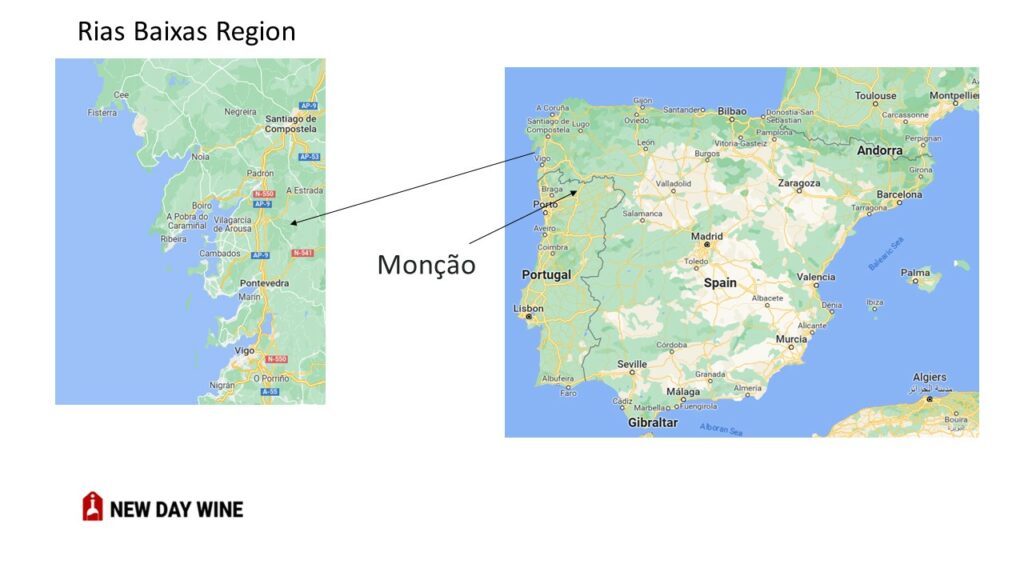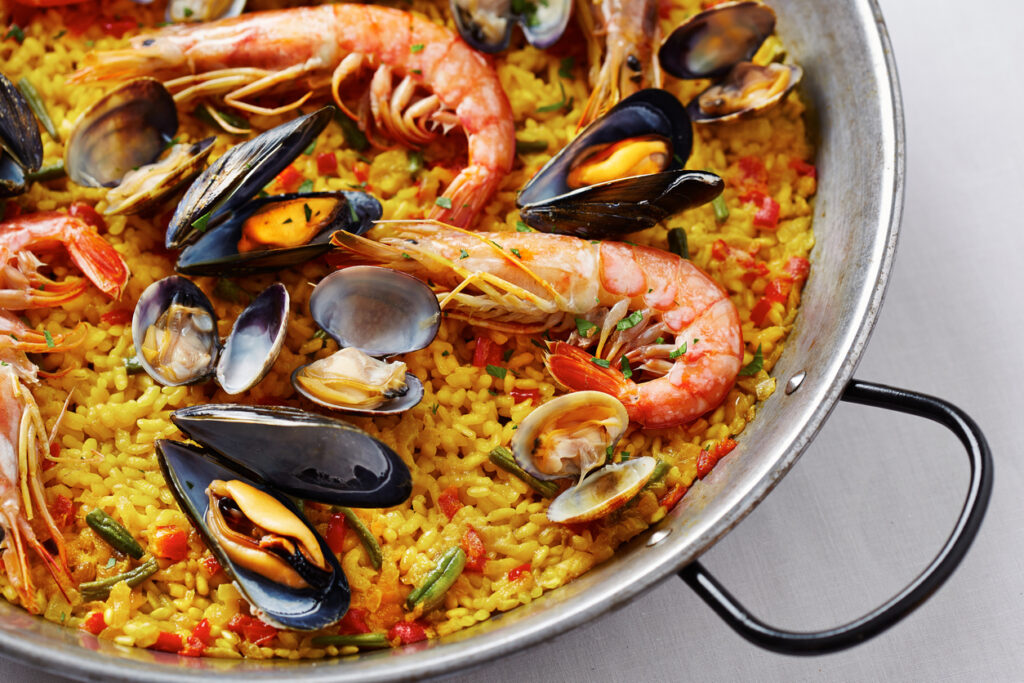This grape variety used to produce white wine, is known as Alvarinho in Portugal and Albarino in Galicia. It is grown in Northwest Portugal and northwest Spain. The grape was possibly introduced to Iberia by Cluny monks in the 12th century, but recent studies suggest that it is native to Portugal and Galicia. The names “Alvarinho” and “Albarino” both come from the word “albo albus,” meaning “white, whitish.
Wine regions
Albariño is produced in the Rias Baixas DO region of Spain, specifically in the towns of Cambados, Condado do Tea, and Barbanza e Iria. In Portugal, it is commonly found in the Vinho Verde region but is only allowed to be grown in Monção and Melgaço. In other areas like Ribeiro, Lima, Braga, or Valdeorras, it is often blended with other grapes such as Loureiro, Godelho, Cainho or Borra al, Arinto or Treixadura to create mixed wines. Prior to the establishment of Rias Baixas DO in 1986, Albariño was frequently used in blends throughout Galicia. Since then, it has gained recognition both locally and internationally as a distinct variety.

Modern Alvarinho
The emergence of Albariño as a variety resulted in the creation of wines that catered to the tastes of wine drinkers across Europe, America, and beyond. These wines boasted clean flavors and rich, ripe fruit, setting them apart from the wines produced in Portugal. Today, Albariño is produced in various regions of California, including Santa Ynez Valley, Clarksburg, Napa, Edna Valley, and Los Carneros AVAs. Additionally, it is also produced in Oregon’s Umpqua Valley AVA by Abacela Winery and in Washington state.

Where does Albariño grow
Albariño is a white grape variety that is most commonly grown in the Rías Baixas region of Galicia, Spain. This region is located on the northwestern coast of Spain and has a cool and wet climate that is ideal for growing this grape variety. The soil in this region is also unique and consists of decomposed granite, which gives the wines produced from Albariño grapes a distinct minerality.
In addition to its native home in Spain, Albariño grapes are also grown in other parts of the world such as Portugal, California, Oregon, and Australia. These regions have similar climates to Rías Baixas and produce wines with similar characteristics. However, due to differences in soil and winemaking techniques, these wines may have slight variations in their flavor profiles.

Albariño in Rías Baixas
Albariño is a white grape variety that is primarily grown in the Rias Baixas region of Galicia, Spain. This grape variety has been gaining popularity among wine lovers around the world due to its unique characteristics and flavors. The name Albariño literally means “white from the Rhine,” but it has nothing to do with Germany’s famous white wines.
The Rias Baixas region is located in northwestern Spain, close to the Atlantic Ocean. It has a cool and wet climate that is ideal for growing Albariño grapes. The soils in this region are also different from other Spanish wine regions, with granite and slate being predominant. These factors give Albariño wines their distinctive minerality, crisp acidity, and aromas of green apples, citrus fruits, and floral notes.

Albariño as Vinho Verde
Albariño, also known as Vinho Verde, is a white wine grape variety that is mainly grown in Spain and Portugal. This grape variety produces wines that are light-bodied, refreshing and highly aromatic. These wines have become increasingly popular in recent years due to their excellent ability to pair well with seafood and other light dishes.
In Portugal, the Albariño vineyards are located near the Minho River Valley region where they produce Vinho Verde wines which have a slightly effervescent quality. Vinho Verde refers to a specific style of wine that originates from the northern part of Portugal.
Albariño wine tasting notes
Albariño is a dry white wine that originates from the Rias Baixas region of northwestern Spain. It’s known for its crisp acidity, refreshing minerality, and delicate flavors of citrus and stone fruit. In recent years, Albariño has gained popularity among wine enthusiasts around the world because of its unique taste profile and versatility with food.

When tasting Albariño, you’ll notice a bright yellow-green color in the glass. The aroma is fresh and aromatic with notes of green apple, pear, lemon zest, and a hint of salty sea breeze. On the palate, Albariño is light-bodied with zesty acidity that makes your mouth water. The flavor profile is dominated by citrus fruits such as lime and grapefruit along with hints of peach and apricot. The finish is crisp and refreshing with a lingering mineral note that enhances the overall experience.
Pairing food with Albariño wine
Albariño, also known as the “wine of the sea,” is a white wine varietal that hails from the Rías Baixas region in Northwestern Spain. It is highly regarded for its crisp acidity and citrusy flavors, making it an excellent pairing with seafood dishes. However, Albariño can also be paired with a wide range of other foods.

The bright acidity and fruit-forward profile of Albariño make it an ideal match for light salads and vegetable dishes. Its crisp flavors complement green vegetables like asparagus, peas, and spinach particularly well. Additionally, Albariño’s citrus notes work perfectly with tangy dressings like vinaigrettes or lemon-based sauces.
For those who prefer meat-based dishes, Albariño pairs beautifully with grilled chicken or pork chops.

